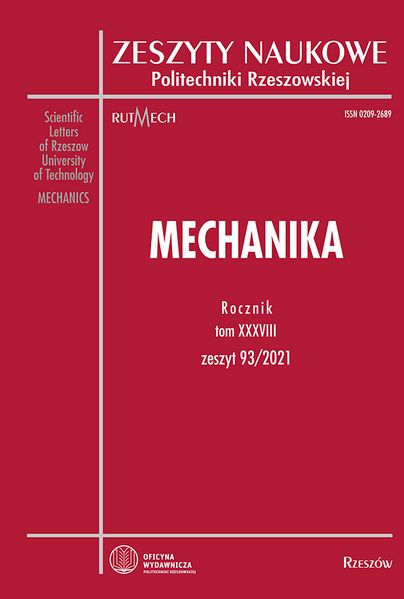Abstract
The paper presents the results of static and fatigue tests from tests carried out on P91 steel with the use of a thin-walled tubular hourglass mini-sample. The tensile and torsion characteristics of the tested material and the mechanical parameters determined on their basis are presented. The paper presents the influence of the type of testing machine control (displacement, strain or stress signal) on the behavior of the material in the form of its responses illustrating changes in the amplitude of stress, strain and hysteresis loop. The differences in the lines of limited fatigue strength, resulting from the application of the load in the form of cyclically changing strain and stress, are presented.
References
Miwa Y., Jitsukawa S., Hishinuma A.: Development of a miniaturized hour-glass shaped fatigue specimen, Journal of Nuclear Materials, vol. 258-263, 1998, pp. 457-461, https://doi.org/10.1016/S0022-3115(98)00306-7.
Nogami S., Itoh T., Sakasegawa H., Tanigawa H., Wakai E., Nishimura A., Hasegawa A.: Study on fatigue life evaluation using small specimens for testing neutron-irradiated materials, Journal of Nuclear Science and Technology, 48(1), 2011, pp. 60-64, https://doi.org/10.1080/18811248.2011.9711679.
Socha G.: Experimental of fatigue cracks nucleation, growth and coalescence in structural steel, International Journal of Fatigue, 25(2), 2003, pp. 139-147, https://doi.org/10.1016/S0142-1123(02)00068-3.
Slot T., Stentz R.H.: Experimental procedures for low-cycle-fatigue research at high temperatures, Experimental Mechanics, March 1968, pp. 107-114.
Li Y., Song Q., Feng S., Sun Ch.: Effects of loading frequency and specimen geometry on high cycle and very high cycle fatigue life of a high strength titanium alloy, Materials, 11 (9), 2018, 1268, pp. 1-9, https://doi.org/10.3390/ma11091628.
Tridelloa A., Paolinob D.S., Chiandussic G., Rossettod M.: VHCF response of H13 steels produced with different manufacturing processes, Procedia Engineering, vol. 160, 2016, pp. 93-100, https://doi.org/10.1016/j.proeng.2016.08.867.
Wu H., Starke P., Boller C.: Characterization of the fatigue behaviour and lifetime evaluation of metallic materials based on thermographic NDT-methods, 14th Quantitative Infra- Red Thermography Conference (IRT2018), 25-29 June 2018, Berlin, Germany, 8 pages.
Istomin K, Donbes G., Schell N., Christ H-J., Pietsch U.: Analysis of VHCF damage in a duplex stainless steel using hard X-ray diffraction techniques, International Journal of Fatigue, vol. 66, 2014, pp. 177-182, DOI: 10.1016/j.ijfatigue.2014.04.001.


